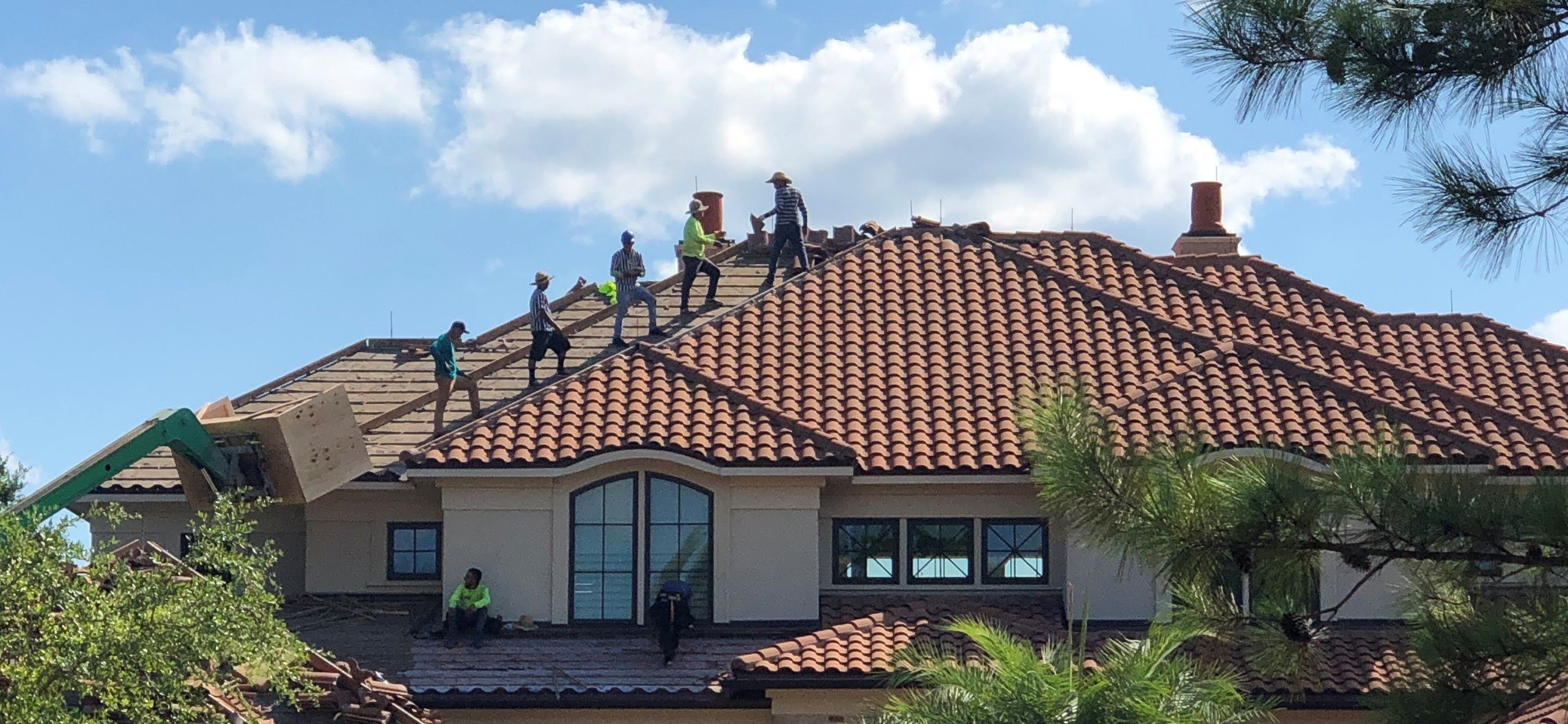The Importance of Picking Professional Roofing Companies Gainesville Florida
The Importance of Picking Professional Roofing Companies Gainesville Florida
Blog Article
Best Practices for Ensuring Appropriate Roof Covering Ventilation
A well balanced consumption and exhaust vent proportion, typically 1:300, plays a critical duty, with intake vents preferably put at the lower edge of the roof for trendy air access and exhaust vents at the height for warm air exit. Maintaining insulation away from vents is crucial to avoid airflow restriction.
Understand Ventilation Basics
Effectively understanding ventilation fundamentals is necessary for making sure the durability and performance of roof covering systems. Efficient ventilation alleviates moisture accumulation and temperature extremes in the attic, both of which can bring about considerable structural damage in time. A well-ventilated roofing system helps in stopping usual concerns such as mold growth, wood rot, and ice dams, which can endanger the stability of the roof covering materials and the underlying frameworks.
The primary goal of air flow is to facilitate the movement of air, enabling a constant exchange between the outdoor and indoor environments. This balance is attained via a mix of intake and exhaust vents that interact to preserve optimal airflow. Consumption vents, generally situated along the soffits or eaves, allow fresh air to enter the attic room room, while exhaust vents, commonly positioned at or near the roof ridge, allow warm, damp air to leave.
Key factors affecting the performance of roofing system ventilation include correct placement, sufficient sizing, and making sure that both intake and exhaust vents are unhampered. Routine evaluation and maintenance are critical to recognize prospective clogs, damages, or inefficiencies in the ventilation system, consequently guarding the roofing's efficiency and sturdiness.
Kinds of Roof Vents
Roof covering vents play a crucial duty in preserving efficient attic air flow and, by extension, the total health and wellness of the roofing system. Numerous types of roofing system vents are available, each with special benefits customized to certain roof covering requirements.

Soffit vents are mounted under the eaves and job in tandem with roofing vents to ensure a well balanced consumption and exhaust system. By enabling cooler air to enter from below, soffit vents promote the expulsion of warm air via top vents. Gable vents, situated on the outside wall surfaces of the attic room, offer an additional effective solution, specifically in homes with saddleback roofs.
Analyze Your Existing Air Flow

Following, think about the age and condition of your roof materials and ventilation elements. Older pop over to these guys systems might not adhere to current building ordinance or may have degraded in time, decreasing their performance. Conduct a complete exam to recognize any kind of signs of damage, such as rust, damages, or spaces that can jeopardize the system's efficiency.
In addition, gauge the attic room temperature level and moisture levels. High temperature levels and moisture can show insufficient air flow.
Installation Best Practices
Reliable installation of roof covering air flow systems is paramount for guaranteeing optimum performance and durability. Proper installment begins with comprehending the certain ventilation needs of the roofing system and the building it covers. This involves computing the correct proportion of intake to exhaust vents, generally adhering to the 1:300 guideline, which specifies one square foot of air flow for every single 300 square feet of attic flooring area.

The positioning of vents is similarly critical. Intake vents ought to be set up at the roofing system's reduced side, commonly in the soffits, to permit cool air to enter. Exhaust vents, on the other hand, ought to be installed near or at the roof's top to facilitate the exit of cozy, damp air. This develops a natural air movement that aids maintain temperature level and wetness balance within the attic room area.
Seal all vent connections diligently to stop air leakages and prospective water infiltration. Use high-grade products and comply with manufacturer standards to ensure longevity and performance. In addition, incorporating ridge vents with baffles can dramatically enhance air flow effectiveness by avoiding wind-driven rain and snow from entering the attic room.
Ultimately, exact installation of roof air flow systems reduces possible problems such as mold growth, ice dams, and architectural damages, making certain the roofing system's integrity and the structure's general health.
Normal Upkeep Tips
Uniformity in upkeep practices is fundamental to making certain the long-lasting performance of roof ventilation systems. Throughout these This Site inspections, ensure that vents are cost-free of particles, nests, and various other blockages that could restrain airflow.
Utilize a soft brush or a vacuum cleaner to remove dirt and particles from consumption and exhaust vents. Be cautious not to harm the air vent screens or louvers throughout the process.
Appropriate insulation is similarly vital. Make sure that attic insulation does not block the vents, as this can severely limit airflow. If any kind of insulation has actually moved or cleared up, rearrange or replace it to keep look here an effective obstacle.
Lastly, replace any damaged or missing out on elements promptly. Broken vents, fractured roof shingles, or shabby blinking can all contribute to inadequate ventilation and ought to be resolved right away. Normal maintenance ensures that the roof air flow system functions optimally, thus expanding the life expectancy of the roof itself.
Verdict
Making certain correct roofing air flow is extremely important for preserving the effectiveness and longevity of a roof covering system. Adherence to the 1:300 consumption and exhaust air vent ratio, coupled with the calculated placement of vents, is essential.
A well balanced consumption and exhaust vent proportion, generally 1:300, plays an essential function, with consumption vents ideally put at the reduced side of the roofing for awesome air access and exhaust vents at the optimal for cozy air leave. Consumption vents, commonly situated along the eaves or soffits, enable fresh air to go into the attic room area, while exhaust vents, frequently located at or near the roofing system ridge, allow hot, humid air to get away.
Soffit vents are installed under the eaves and work in tandem with roof vents to make certain a balanced consumption and exhaust system. By permitting cooler air to go into from below, soffit vents promote the expulsion of warm air through upper vents. Adherence to the 1:300 intake and exhaust vent ratio, paired with the critical placement of vents, is important.
Report this page